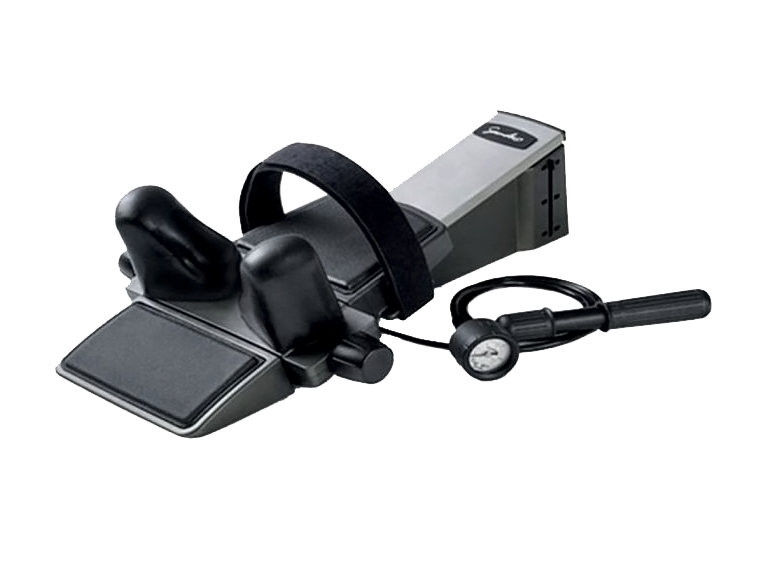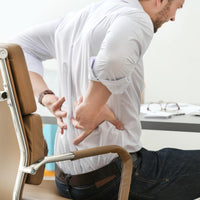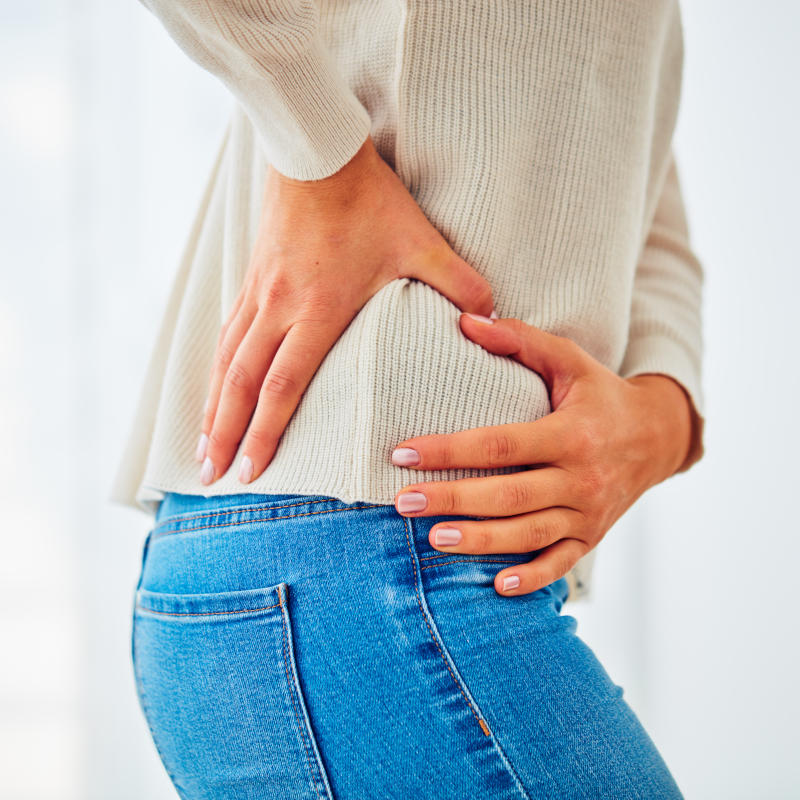Alternative Methods to Help Manage Pain After Orthopedic Surgery
After Orthopedic surgery, your doctors and nurses will make every effort to control your pain. While you should expect to feel some discomfort, advancements in pain control now make it easier for your doctor to manage and relieve pain.
Surgeons and their patients are increasingly using alternative methods, such as relaxation techniques, cold therapy, and acupuncture to supplement conventional medicine. A combined approach to pain management is often the best option because it allows the surgeon to tailor pain control methods to each individual patient.
This article focuses on alternative approaches your doctor may recommend for pain management.
To learn more about the medications used to control pain after Orthopedic surgery: Managing Pain With Medications After Orthopedic Surgery
Transcutaneous Electrical Nerve Stimulation (TENS)
In transcutaneous electrical nerve stimulation (TENS) a special device transmits low-level electrical charges into the area of the body that is in pain.
A TENS unit sends a mild electrical current along your nerve fibers.
A TENS system consists of a small, battery-powered machine connected by wires to a pair of electrodes. The two electrodes are connected to your skin near the source of pain or at a pressure point. A mild electrical current travels through your skin and along your nerve fibers which may cause a warm, tingling sensation. A typical TENS session lasts anywhere from 5 to 15 minutes.
Many studies have found that TENS is useful in easing pain after surgery, as well as pain related to injuries, such as fractures and sprains. TENS may also be helpful for some chronic pain conditions, particularly low back pain. TENS is generally considered safe. However, its routine use is not recommended.
There is also an acupuncture version of TENS in which the electrical impulses are sent through acupuncture needles instead of electrode pads. This form of TENS is called "electro-acupuncture" or percutaneous electrical nerve stimulation (PENS).
How TENS Works
There are several ways TENS is thought to relieve pain:
Gate Control Theory. In order for you to feel pain, the sensation must travel through a "gate" to get to the brain. Normally, the pain is allowed to flow freely through the gate because it (pain) is the only sensation trying to get through. However, if the gate becomes flooded with another type of sensation (in this case, an electric current), the gate will reach capacity and no longer have room for the underlying pain sensation to get through.
Release of Endogenous Opiates. Some scientists believe that TENS works by forcing certain nerve cells to release more of the body's natural pain killers called "endorphins." This causes you to feel less pain.
Central Inhibitory Effect. TENS may also work by changing the way your brain perceives pain.
When to Avoid TENS
TENS might not work as well if your pain is caused by mental or emotional problems. It also does not work as well if you suffer from drug addiction.
TENS should not be used if you have any of the following conditions:
- Implanted medical device (defibrillator or pacemaker)
- Pregnancy
- Epilepsy
- Mental retardation
- Undiagnosed pain
Continuous Passive Motion
Continuous passive motion (CPM) is a technique in which your joint is moved constantly in a mechanical splint to prevent stiffness and increase range of motion. A CPM machine moves your joint for you without requiring you to exert any effort.
Medical evidence indicates that in many cases immobilization increases pain after surgery. As a result, early motion has been applied to many Orthopedic problems. CPM is thought to be most effective in the rehabilitation treatment of:
- Cartilage damage
- A bacterial infection inside a joint
- A fracture around a joint after it has been fixed with internal devices
CPM is believed to enhance the nutrition of your joint, discourage the formation of scar tissue, and prevent the abnormal shortening of the muscles surrounding your joints.
This CPM machine cradles the lower leg and gently moves it.
If you can already move — either actively or passively — without CPM, then using the device will not be beneficial. CPM is not a substitute for working with an experienced physical therapist who is trained to provide both active and passive motion exercises. If your doctor recommends CPM, you will also be monitored by a physical therapist.
The most important time to use a CPM device seems to be in the first 2 to 7 days after surgery, for about 4 to 6 hours every day.
Initially, CPM was only used in hospitals or outpatient physical therapy clinics, but today, CPM units can be purchased for use at home.
Acupuncture
When acupuncture is combined with traditional pain relief methods, it may be helpful for some types of chronic pain:
- Low back pain
- Osteoarthritis
- Fibromyalgia
- Aching muscle pain (knots)
- Tennis elbow
- Carpal tunnel syndrome
- Stroke rehabilitation
Acupuncture points tend to be areas of your skin that contain relatively large amounts of intersecting nerve endings that feed into your muscles or bones. Some scientists believe that these "acupoints" possess special electrical characteristics that can be manipulated using painless hair-thin needles.
A typical acupuncture procedure lasts for about 30 minutes. Treatments are used to relieve local pain and swelling, as well as to provide a more general feeling of relaxation due to the release of your body's natural painkillers, called endorphins.
Because each acupoint is responsible for producing effects in different areas of the body, it is important to be clear with your provider about the specific area and intensity of your pain. The acupuncturist can then target the correct acupoint.
Cold Therapy
If you've ever applied a pack of frozen peas to a sprained ankle, you already understand some of the benefits of cold therapy systems. Cold packs have a numbing effect and can greatly reduce the amount of pain that you feel. By lessening pain, they also reduce the need for pain medication.
Cold therapy systems are a great alternative to strong prescription painkillers like opioids. For people who are recovering from surgery, cold therapy offers immediate relief without the dangerous side effects that come with opioids. Considering the opioid epidemic in American and the high possibility of addiction that comes with these prescription drugs, cold therapy is a safer and healthier solution for pain relief.
Psychological Methods
Psychological methods can be effective as an additional treatment for pain control. These methods can reduce or eliminate the need for medication. Some of oldest and best documented psychological methods include:
- Relaxation techniques
- Guided imagery
- Medical hypnosis
In 18 medical research studies, medical hypnosis, guided imagery, or relaxation techniques were used to improve recovery after surgery. In 16 of the studies (4 were Orthopedic surgeries), researchers documented improvements in both the physical and emotional recoveries of the patients.
These results demonstrated that psychological methods are effective as an additional treatment for pain management, postsurgical recovery (physical and emotional), and Orthopedic rehabilitation.
These methods appear to have potential in Orthopedic surgery that could reduce pain, enhance treatment outcomes, and contain or even reduce medical costs.
Aroma Therapy
Aromatherapy refers to the medicinal or therapeutic use of essential oils absorbed through the skin or olfactory system. Essential oils, which are derived from plants, are used to treat illness as well as to enhance physical and psychological well-being. Although the use of distilled plant materials dates back to medieval Persia, the term “aromatherapy” was first used by Rene Maurice Gattefosse in the early 20th century. In his 1937 book, Aromatherapie, Gattefosse claimed that herbal medicine could be used to treat virtually any ailment throughout the human organ system. Today, aromatherapy is popular in the United States and around the world. Hindawi Publishing Corporation Pain Research and Treatment Volume 2016, Article ID 8158693, 13 pages
Read the scientific literature on pain relief with aroma therapy.


























